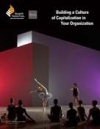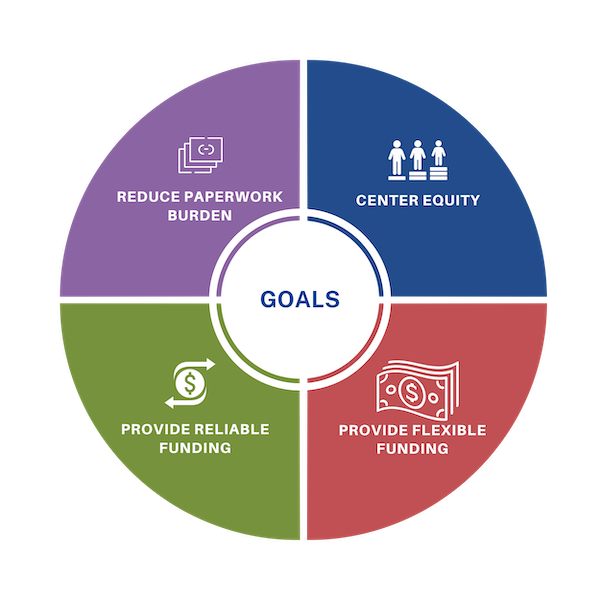Site Search
- resource provided by the Forum Network Knowledgebase.
Search Tip: Search with " " to find exact matches.
The Princeton Area Community Foundation has awarded a total of $250,000 in grants to local nonprofits for summer initiatives that reach children and teens, including many whose families would not otherwise have access to affordable, high-quality programs when school is not in session.
The grants, funded through the Community Foundation’s Community Impact program, will support 26 summer programs that provide a wide variety of ac
tivities for young people, including arts instruction, academic enrichment, social-emotional learning opportunities, swimming and sports lessons. Many programs also provide transportation and meals. Some initiatives include bilingual instruction. Some are geared toward populations that may be difficult to reach, such as tweens and teens.
For many families, summer programs serve as safety nets that help working parents. But for many families, the programs are often out of reach, because of affordability or accessibility.
“Summer programs help reduce learning loss and provide much needed support for many working families who otherwise would not be able to enroll their children in quality, summer activities during the summer months,” Nelida Valentin, Community Foundation vice president of grants and programs, said. “These grants help nonprofit partners sustain terrific initiatives that serve some of our most vulnerable children, particularly teens and tweens in this region. We also want to thank our generous donors, whose support of our Community Impact grants program helps make these grants possible.”
CNJG is pleased to offer this program to family foundation members as part of NCFP's Fundamentals of Family Philanthropy 2024 webinar series, providing guidance on the core tenets of effective family philanthropy.
This session will explore the dynamic ways in which cultural and faith-based values can shape and inform the mission and impact of your family’s philanthropic endeavors. Faith has been imbedded in US philanthropy from its earliest days and many donors continue to lean on those values when driving change. Some donors openly talk about the link between their faith and giving, while others use their faith as quiet motivation. Panelists will share practical strategies, case studies, and best practices for aligning your family’s giving with your cultural and faith-based principles, allowing you to achieve a deeper and more meaningful impact in your grantmaking efforts in ways that also ensure equity and promote open dialogue. Whether you seek to honor your heritage, promote justice, and/or support causes close to your heart, this webinar will provide valuable guidance for harnessing the power of culture and faith in your family’s philanthropy.
Cost: This event is free for CNJG Members who are family foundations.
Other types of foundations are ineligible to join this webinar.
This program is a CNJG membership benefit for family foundation members, including staff and trustees, in partnership with the National Center for Family Philanthropy.
Centering learning in our work allows us to refresh and recalibrate grantmaking approaches to ensure we are as effective and equitable as possible. However, there are many questions to consider when it comes to sharpening an organization’s learning framework. For example, how is having a learning orientation to grantmaking distinct from monitoring and evaluation? What impact can a learning orientation have on grantmaking in support of immigrant and refugee communities? And how can learning shape grantmaking strategy?
Join Grantmakers Concerned with Immigrants and Refugees (GCIR) in a conversation with learning professionals in philanthropy to understand how their distinct approaches to learning impact their approach to grantmaking. Participants will also learn how funders have adjusted their strategies and practices to better support migrant justice.
SPEAKERS
Arturo Garcia, Interim Co-Lead, Strategic Learning, Research, and Evaluation, Kresge Foundation
Kyle Rinne-Meyers, Director of Learning, Grantmakers for Effective Organizations (GEO)
Austin Snowbarger, Learning and Partnerships Manager, Center for Disaster Philanthropy
MODERATOR
Anduriña Espinoza-Wasil, Programs Learning Manager, Grantmakers Concerned with Immigrants and Refugees
COST: Free for GCIR members; staff and trustees of grantmaking foundations; philanthropic advisors; and staff of philanthropic support organizations.
A Framework for Change
The Doing Good Better Steering Committee encourages funders to focus on and advocate for four (4) changes that can make an immediate difference in addressing power dynamics between nonprofits and funders and maximizing nonprofit impact. These goals are aligned with Trust Based Philanthropy, and are interdependent; when combined, they foster equity and a spirit of mutual trust between grantmakers and nonprofit partners. For more details about a specific goal, click on its individual goal link below.
• Goal 1: Center Equity
• Goal 2: Provide Flexible Funding
• Goal 3: Provide Reliable Funding
• Goal 4: Reduce Paperwork Burden
Self-Assessment/Reflection Tool for Funders
Philanthropy and Nonprofits for Greater Impact: The “Doing Good Better” Blueprint Video

Nonprofits can and should play an active role during elections, particularly by educating and activating voters. However, with important local, state and federal elections coming up this fall, nonprofits should take the time to remind their staff about appropriate activity during a political campaign or at any other time. This overview developed by Donors Forum provides important tips and examples of activities that are permissible for nonprofits during an election cycle.
Eastside High School in Paterson sits in the middle of a struggling neighborhood, in a city where 25% of the residents are living below the poverty line, according to the 2020 U.S. Census.
Paterson’s poverty rate is more than twice the state average of 10%, which makes the school, built in 1926, a refuge — and now a resource.
On Thursday, Montclair State University president Jonathan Koppell came to Eastside with a $1 million grant and a vision: to make the school into a community hub, offering free meals, health care, and mental health counseling, not just to the 2,000 students, but to their families as well.
The initiative is called One Square Mile, and it is being seeded with a $1 million grant from the Geraldine R. Dodge Foundation. The program was developed by Koppell during his tenure as Dean of the Watts College of Public Service and Community Solutions at Arizona State University, which worked with the Phoenix-area community of Maryvale to address poverty.
A CNJG member queried the Health & Aging listserves asking for sample letters of inquiry. This document includes a few responses from fellow members. If you would like to add yours to this list, please email us.

For decades, aging and HIV/AIDS and their medical, governmental, community, and philanthropic structures and services were worlds apart. This made sense at first, when the majority of the first generation of people affected by HIV were young gay men, many of whom got their care in HIV-specific or infectious disease settings. The odds of living a long life with HIV/AIDS were small, and even survivors did not seek traditional aging services.
Those circumstances have now changed. Thanks to advances in treatment, the ability to live for decades with HIV has become a remarkable success story. Add to this the reality of older people who are acquiring the infection in their 50s or 60s, and HIV/AIDS must now be included as an aging issue. Of the 1.1 million people in the United States who are living with HIV/AIDS, half are 50 or older (50+). By 2030, it is anticipated that three out of four people who are living with HIV will be 50+.
The whole-person outlook and community-based approach of aging services has the potential to bring comfort to this resilient but overlooked group of people. This report will raise the voices and examine the needs of older people living with HIV, while exploring opportunities for philanthropies to create meaningful impact in public and personal health and wellbeing.

